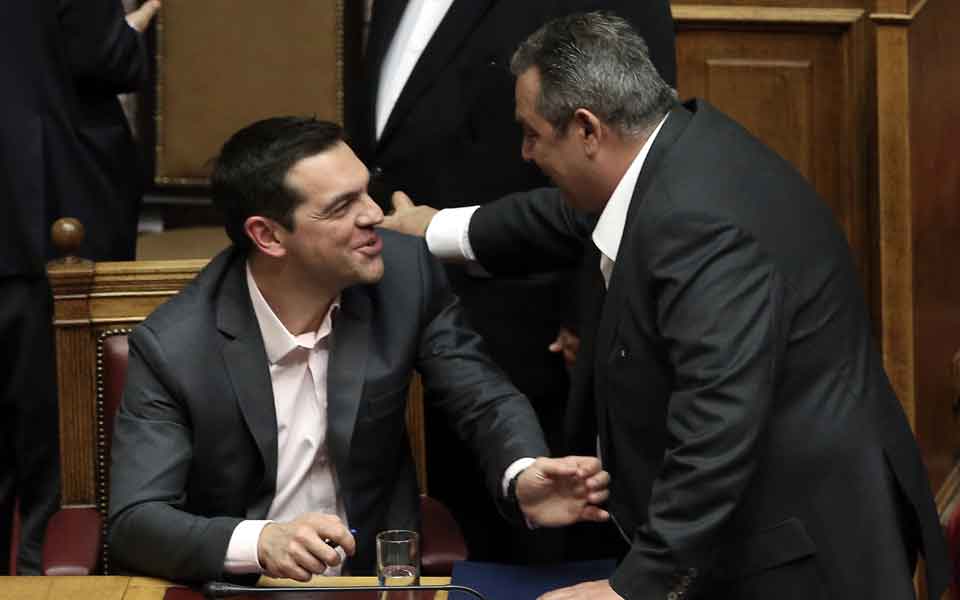EU reports have eye on past and future

Two very different reports concerning Greece and its bailout programs were published by European institutions last week. One was issued by the European Commission in Brussels and painted the reforms adopted as part of the third program in a positive light, while the other was published by the European Court of Auditors (ECA) in Luxembourg and highlighted the weaknesses of the three memorandums of understanding (MoUs).
The two documents make for quite a contrast. The Commission’s leaves the impression that the efforts of the last seven years are now coming to fruition, while the ECA’s assessment suggests Greece has had to wait too long for its recovery because of a mishandling of the programs.
The Commission’s background report on the third program, overseen by the European Stability Mechanism (ESM), provides an upbeat assessment of the direction that the final MoU is heading in.
“During the first two-thirds of the ESM program, Greece has undertaken significant reform efforts across all policy areas,” reads the report. “The Greek economy has remained more resilient than expected in a difficult environment, fiscal targets have been widely outperformed, and gamechanging structural reforms in areas such as tax administration, the business environment, energy, privatization and public administration have been launched.”
The report highlights some of the most significant reforms that have been conducted since 2015 to accompany the continued fiscal adjustment during the last two years. The creation of the Independent Authority of Public Revenue, changes to the pension system to improve its sustainability and enhance inter-generational fairness, greater and more consistent checks on healthcare spending and improvements to the governance of local banks and the Hellenic Financial Stability Fund (HFSF) were among the ones highlighted.
Further reforms to come are also heralded, such as the liberalization of product markets and the opening up of the energy market, which is currently under discussion between Athens and the institutions.
It has been suggested that the Commission’s report is too optimistic in its outlook and overlooks some of the serious problems still afflicting Greece and its economy. However, a necessary dose of realism is not completely absent from the 192-page document.
“While major macroeconomic imbalances have been corrected (such as the fiscal balance, unit labor costs and current account), many reforms to address underlying structural weaknesses and ‘stock’ problems (such as the high level of NPLs) will require further sustained efforts to be completed, both during the remainder of the program and beyond,” the report reads. “In this respect, policies under the program should be embedded within a sound medium-term strategy for growth and reform.”
The sense that the Commission may be trying to round off some of the edges is partly generated by the clear desire on the lenders’ side for there to be as successful a completion of the third (and hopefully final) Greek bailout as possible.
It is truly ironic that under the leadership of two parties that probably fought against the MoUs most vociferously when in opposition (and for several months while in government) Greece is edging toward the final stretch of the program era. But as we get closer to the finishing line (which in itself does not offer any guarantees of prosperity and plain sailing), it is worth remembering what caused this friction within the country and between Greece and its creditors since 2010.
The interests of Athens and the institutions may be aligned now as each side hopes to have a positive narrative to share at the end of the process, but for a long time there was no such convergence. There were several reasons for this, one of them being the faults in the program itself.
This is emphasized in the report by the ECA, a body which is responsible for auditing the European Union’s finances. The document pinpoints some of the difficulties the Commission faced in fulfilling its role within the troika due to a lack of experience in handling such exercises. “We found weaknesses in documentation, justification of the assumptions and quality controls,” write the authors, for example.
“Overall, the design of the conditions did make the progress of reform possible, but we found weaknesses,” they add. “Some key measures were not sufficiently justified or adapted to specific sector weaknesses. For others, the Commission did not comprehensively consider Greece’s implementation capacity in the design process and thus did not adapt the scope and timing accordingly.”
The auditors go into some depth on the program’s specific shortcomings. For instance, they discern a “lack of strategy” regarding export facilitation. They argue that the first MoU did not put forward a comprehensive method for “sectors with a competitive advantage by taking into consideration the specific structure of the Greek economy” and that this issue was only addressed in the second bailout, agreed in 2012.
“Cases of inconsistently designed measures and insufficient cross-policy coordination show that the overall design of the Greek programs also lacked an explicit strategy,” the authors claim.
The report also pulls no punches with regard to where Greece stands after being under an adjustment program for the last seven years. “As of mid-2017, Greece still requires external financial support, which indicates that the earlier program, also due to implementation weaknesses, were not able to restore the country’s ability to finance its needs on the markets. The specific objectives of the program were met only to a limited extent,” the authors write, adding that Greece had been scheduled to return to growth in 2012 and that banks’ balance sheets have deteriorated substantially due to the poor macroeconomic conditions. They also remind readers that the 45.4 billion euros of Greek taxpayers’ money invested to recapitalize Greek banks is now worth just 5.7 billion euros.
Neither of the reports published last week give a comprehensive picture of what happened since 2010. For instance, the political complications within Greece are not part of the subject matter assessed in either document. However, when combined they create a timely reminder.
As the third MoU enters its final stretch, it is vital that we are fully aware of what has been achieved and where things went wrong. The purpose is not to delude ourselves about the position Greece is in, nor to seek to apportion blame, but to be confident that we have all learnt enough to move on and not relive the dreadful experience of the last seven years.





